Healthy, Wealthy, and Wise
 The Hoover Institution gratefully acknowledges
The Hoover Institution gratefully acknowledges
the following individuals and foundations
for their significant support of this publication:
J AN AND J IM B OCHNOWSKI
L YNDE AND H ARRY B RADLEY F OUNDATION
F OUNDATION FOR B ETTER H EALTH
Healthy, Wealthy,
and Wise
5 Steps to a Better Health Care System
SECOND EDITION
John F. Cogan,
R. Glenn Hubbard, and
Daniel P. Kessler
THE HOOVER INSTITUTION PRESS
Stanford University Stanford, California
and
THE AEI PRESS
Publisher for the American Enterprise Institute W ashington, D.C.
 T HE H OOVER I NSTITUTION ON W AR , R EVOLUTION AND P EACE , founded at Stanford University in 1919 by Herbert Hoover, who went on to become the thirty-first president of the United States, is an interdisciplinary research center for advanced study on domestic and international affairs.
T HE H OOVER I NSTITUTION ON W AR , R EVOLUTION AND P EACE , founded at Stanford University in 1919 by Herbert Hoover, who went on to become the thirty-first president of the United States, is an interdisciplinary research center for advanced study on domestic and international affairs.
www.hoover.org
 T HE A MERICAN E NTERPRISE I NSTITUTE is a community of scholars and supporters committed to expanding liberty, increasing individual opportunity, and strengthening free enterprise.
T HE A MERICAN E NTERPRISE I NSTITUTE is a community of scholars and supporters committed to expanding liberty, increasing individual opportunity, and strengthening free enterprise.
www.aei.org
Hoover Institution Press Publication No. 582
Hoover Institution at Leland Stanford Junior University,
Stanford, California 94305-6010
Copyright 2011 by the Board of Trustees of the Leland Stanford Junior University and the American Enterprise Institute for Public Policy Research, Washington, D.C.
Copyright 2005 by the American Enterprise Institute for Public Policy Research, Washington, D.C. and the Hoover Institution, Stanford, California
All rights reserved. No part of this publication may be used or reproduced in any manner whatsoever without permission in writing from the Hoover Institution and the American Enterprise Institute except in the case of brief quotations embodied in news articles, critical articles, or reviews. The views expressed in the publications of the Hoover Institution and American Enterprise Institute are those of the authors and do not necessarily reflect the views of the staff, advisory panels, officers, or trustees of the Hoover Institution or the American Enterprise Institute.
First edition 2005
Second edition, first printing 2011
Manufactured in the United States of America
Cataloging-in-Publication Data is available from the Library of Congress.
ISBN-13: 978-0-8179-1064-8 (cloth. : alk. paper)
ISBN-13: 978-0-8179-1066-2 (e-book)
Contents
The Good: Innovation
The Bad: High Costs and a Large Uninsured Population
High Costs: No Easy Answer
The Uninsured Population: Many Causes, Uncertain Consequences
The Ugly: Backlash against Markets and the Misguided Policy Response
The Backlash against Markets
The Misguided Policy Response
Increase Individual Involvement in Health Care Decisions
In Private Markets, Reform Taxation of Health Spending
Increase Cost Sharing in Government Programs
Deregulate Insurance Markets and Redesign Medicare and Medicaid
Deregulate Insurance Markets
Redesign Medicare and Medicaid
Expand Provision of Health Information
Control Anticompetitive Behavior
Reform the Malpractice System
Study the Tax Preference for Nonprofits
Effects of Reforms on Health Care Spending
Tax Deductibility
Tax Credit
Insurance-Market Reform
Malpractice Reform
Summary and Discussion
Effects of Reforms on the Number of Uninsured
Tax Deductibility
Tax Credit
Insurance-Market and Malpractice Reforms
Summary and Discussion
Effects of Reforms on the Federal Budget
Tax Deductibility
Tax Credit
Insurance-Market and Malpractice Reforms
Subsidy for the Chronically Ill
Summary and Discussion
Distributional Impact
Preface to the Second Edition
When we published the first edition of this book in 2005, our country faced an important fork in the road in health policy: shift to more patient-centered health care, with incentives to control costs and promote innovation, or surrender to pressure for expansion of the role of government, with diminished incentives for both cost containment and innovation. With the passage of the Patient Protection and Affordable Care Act (PPACA) in 2010, President Obama and the Congress chose the second path.
This new law represents a wrong turn. Unpopular with the American people in no small part because of the uncompromising legislative process through which it was enacted, the law put the crucial first step of cost containment and innovation in the back seat of a car driven by costly expansion of access within a system of flawed incentives. This approach will lead to higher health spending, greater government involvement in health care administration, and negative effects on the U.S. economic activity.
There is a better way.
Fundamental reform centering on tax changes, insurance-market changes, and the redesign of Medicare and Medicaid can slow the rate of growth of health care costs, expand access to high-quality health care, and slow down the runaway budget train. While we wish the PPACA had not been passed and we believe Congress should start over, we also present pathways toward sensible reform within the recently enacted law and, importantly, within the existing frameworks of the Medicare and Medicaid programs.
It remains the case that unintended consequences of a handful of public policies are in large part responsible for the problems of the health care system. These policies share a common feature, now amplified by the PPACA: they fail to promote the proper functioning of markets. In two areas in particular, tax policy and health insurance regulation, government policy continues to actively hinder the operation of markets for health services.
Since the books initial publication, we have conducted additional research on the consequences of tax policy for health spending and health insurance. We present that work, along with updated estimates of the impact of our proposal on the federal budget, the number of insured Americans, and health care spending.
Our closing point in the first edition is now more true after the passage of the 2010 law: the time to implement sensible reforms is now. Failure to do so will exacerbate the problems of wasteful cost growth and lack of insurance. It will inevitably increase the pressure for more public intervention, with adverse consequences for the quality of health care and economic growth more broadly.
John F. Cogan R. Glenn Hubbard Daniel P. Kessler
Acknowledgments
We are grateful to Joe Antos, Chris DeMuth, Doug Holtz-Eakin, Al Hubbard, Ben Lytle, Cindy Miller, Sam Nussbaum, Mark Pauly, Dhan Shapurji, Marc Sumerlin, and Janet Stokes Trantwein for helpful comments and discussions; to Evan Lodes for exceptional research assistance; and to Sam Thernstrom and Barbara Egbert for excellent editorial advice.
Introduction
Health care in the United States has made remarkable advances over the past forty years. Dramatic improvements in medical technology have expanded both the length and quality of life. In general, Americans are remarkably satisfied with the quality of their health care. Yet our health care system also has several well-known problems: high costs, significant numbers of people without insurance, and glaring gaps in quality and efficiency.

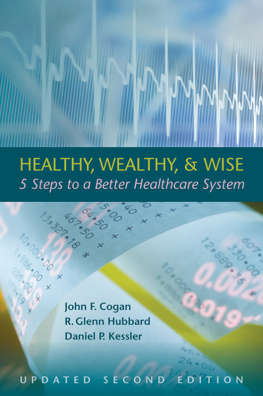





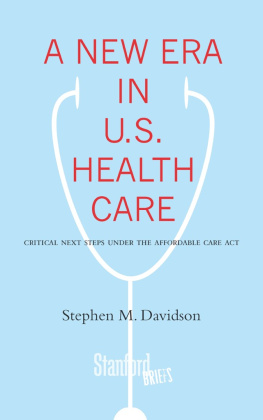
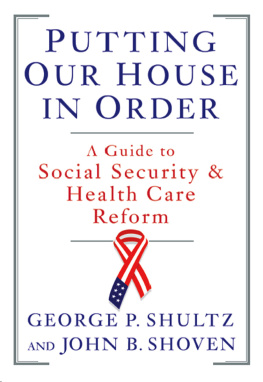

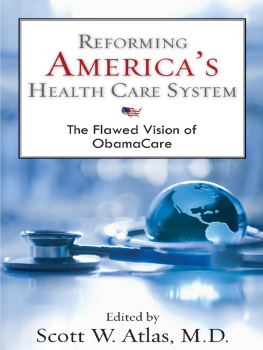
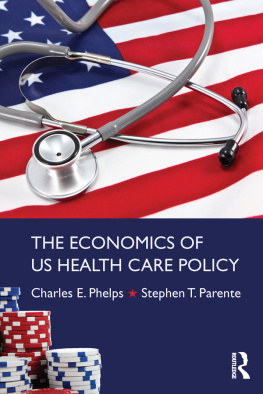
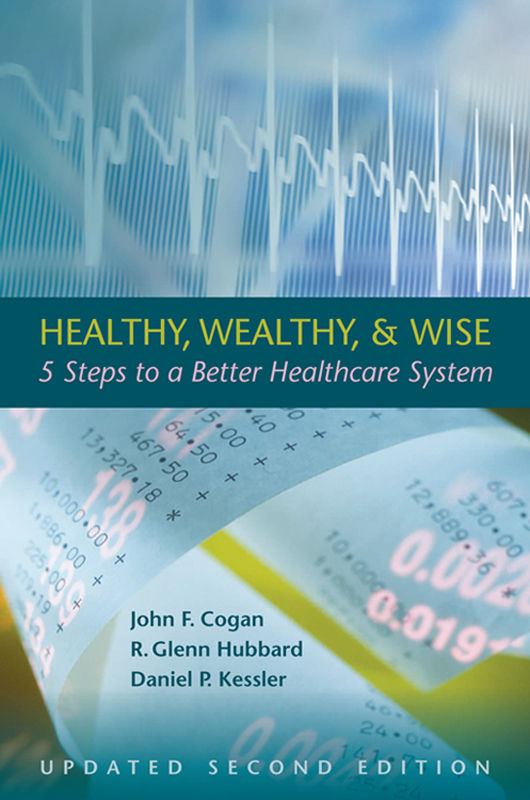
 The Hoover Institution gratefully acknowledges
The Hoover Institution gratefully acknowledges T HE H OOVER I NSTITUTION ON W AR , R EVOLUTION AND P EACE , founded at Stanford University in 1919 by Herbert Hoover, who went on to become the thirty-first president of the United States, is an interdisciplinary research center for advanced study on domestic and international affairs.
T HE H OOVER I NSTITUTION ON W AR , R EVOLUTION AND P EACE , founded at Stanford University in 1919 by Herbert Hoover, who went on to become the thirty-first president of the United States, is an interdisciplinary research center for advanced study on domestic and international affairs. T HE A MERICAN E NTERPRISE I NSTITUTE is a community of scholars and supporters committed to expanding liberty, increasing individual opportunity, and strengthening free enterprise.
T HE A MERICAN E NTERPRISE I NSTITUTE is a community of scholars and supporters committed to expanding liberty, increasing individual opportunity, and strengthening free enterprise.